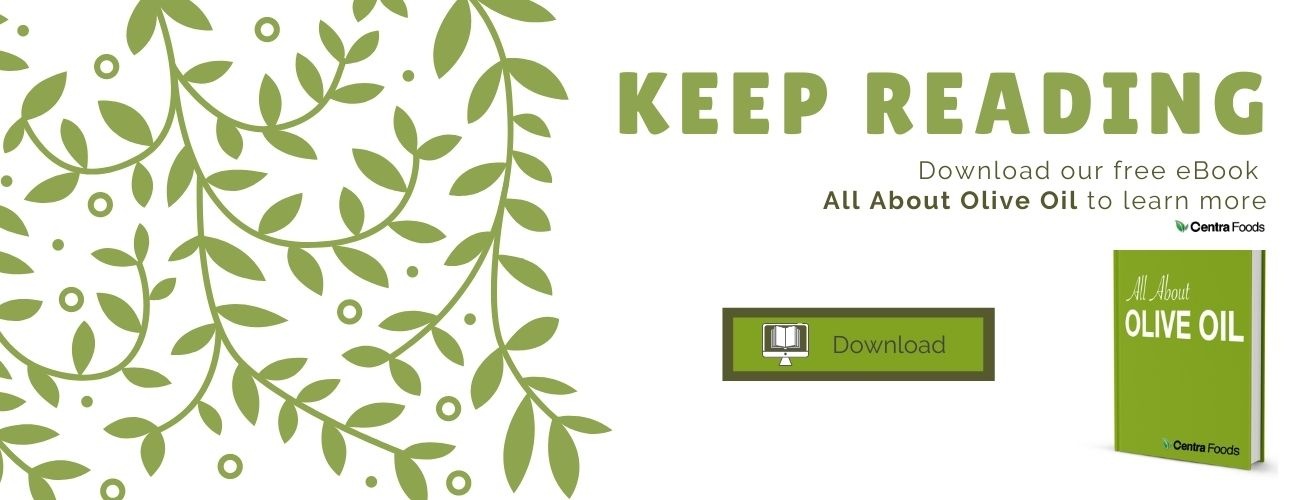 Phew! What a confusing industry olive oil is! There's so many grade names and terms to know, to really understand what you're getting when you buy olive oil. My goal is to spell these out as clearly as possible for you, so that you can get exactly what you're looking for. Today, we’re going to concentrate on Extra Virgin and Virgin Olive Oil.
Phew! What a confusing industry olive oil is! There's so many grade names and terms to know, to really understand what you're getting when you buy olive oil. My goal is to spell these out as clearly as possible for you, so that you can get exactly what you're looking for. Today, we’re going to concentrate on Extra Virgin and Virgin Olive Oil.
These two terms, Extra Virgin Olive Oil and Virgin Olive Oil are so close to each other. They each describe a particular grade (or quality) of oil. I suppose it's logical that they're so close in name, because the quality of oil is so similar as well. These grades are more like sisters than distant cousins. Let's discuss the similarities between these two oils first.
How are Virgin Olive Oil and Extra Virgin Olive Oil Similar?
Extra Virgin and Virgin Olive Oil both come from the first pressing of the olives. There's no refining process involved, and no additives. Just crushed olive pulp that’s squeezed out.
Extra Virgin Olive Oil is a cold press, and no heat or hot water is added in the manufacturing process. In most mills, Virgin Olive Oil is also a cold press though some manufacturers may add warm water to help increase their Virgin Olive Oil yield. Therefore, the Virgin Olive Oil may be cold pressed as well, but it’s safest to not make that assumption.
How are Virgin Olive Oil and Extra Virgin Olive Oil Different?
The biggest difference between Extra Virgin and Virgin Olive Oil is the acidity levels of the oils after pressing. Extra Virgin Olive Oil has a maximum acidity level of 0.8. At the same time, Virgin Olive Oi has a max acidity level of 2.0.
How Does Olive Oil Acidity Relate to Quality?
Let’s discuss what the different acidity numbers mean, in layman's terms. The basic equation is, the lower the acidity level, the higher the quality of oil.  Natural acidity levels in olives are affected by a number of things-- sunlight, soil, air, how the olive is picked and water given to the tree as it is growing. But above and beyond that, one of the biggest things that changes an acidity level is the natural ripening/breakdown process that begins after the olive is picked and continues until the oil is consumed.
Natural acidity levels in olives are affected by a number of things-- sunlight, soil, air, how the olive is picked and water given to the tree as it is growing. But above and beyond that, one of the biggest things that changes an acidity level is the natural ripening/breakdown process that begins after the olive is picked and continues until the oil is consumed.
This is a natural process that occurs after any fruit is picked. Just think, if you pick an apple off a tree and take a bite, it will be tart-- after a week or two, it will be riper and sweeter. A lot of this process occurs because of the natural reaction between the fruit and it’s environment-- most often air, sunlight and heat are the influential factors.
Let me give you a real-life example of how this process affects olives and can change if an oil is deemed Extra Virgin or Virgin Olive Oil after pressing. Let’s pretend that two identical loads of olives are picked from the orchards and brought in to be pressed in the mill. One of these loads is picked on a beautiful, sunny and unusually warm afternoon in January in the Mediterranean. The other is picked on a cool, cloudy and brisk day a week later. Because each of those olives are affected by the natural climate around them, it’s quite likely that the olives picked on the sunny day would have higher acidity level-- the sun shining down on them would cause the olives to ripen and become warm, changing the acidity level inside. It’s also very possible that these sunny-day-olives, when tasted and tested after pressing, would be deemed Virgin Olive Oil because of their higher acidity level-- even if the olives the came from the same trees, from the same grove.
Now this is just one example, but you can see that acidity levels are often in flux and easily affected by their environment. But now you know! The biggest difference between Virgin and Extra Virgin Olive Oil has to do with the taste profiles and final acidity of each oil.
What is this mean for your business?
Is the difference between Extra Virgin and Virgin Olive Oil going to affect your business in some huge way? Probably not. We do find that food manufacturers often will pay the slight increase in cost to get Extra Virgin Olive Oil as an ingredient in their product-- simply because consumers in the US like to see it on the ingredient list and it helps their product sales. That said, the quality and price is so similar that it probably won't make a big difference either way.
But this is a common question, because not many people really go into the details of the differences between Extra Virgin and Virgin Olive Oil. And everyone knows my stance by now-- it's always nice to be informed!
Want to get information like this delivered to your inbox? Subscribe to this blog.
Topics: Extra Virgin Olive Oil, Comparing Oils













